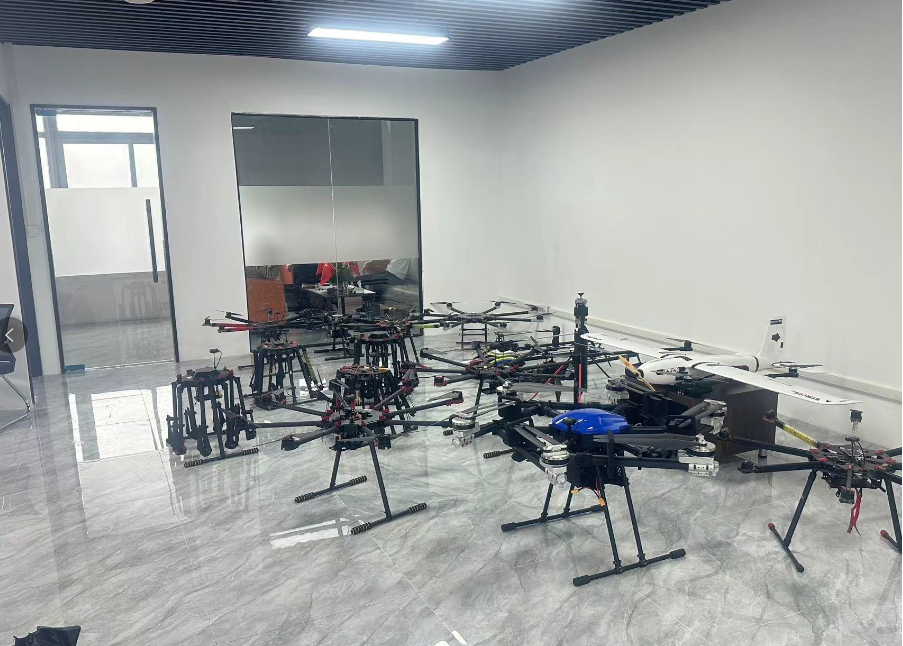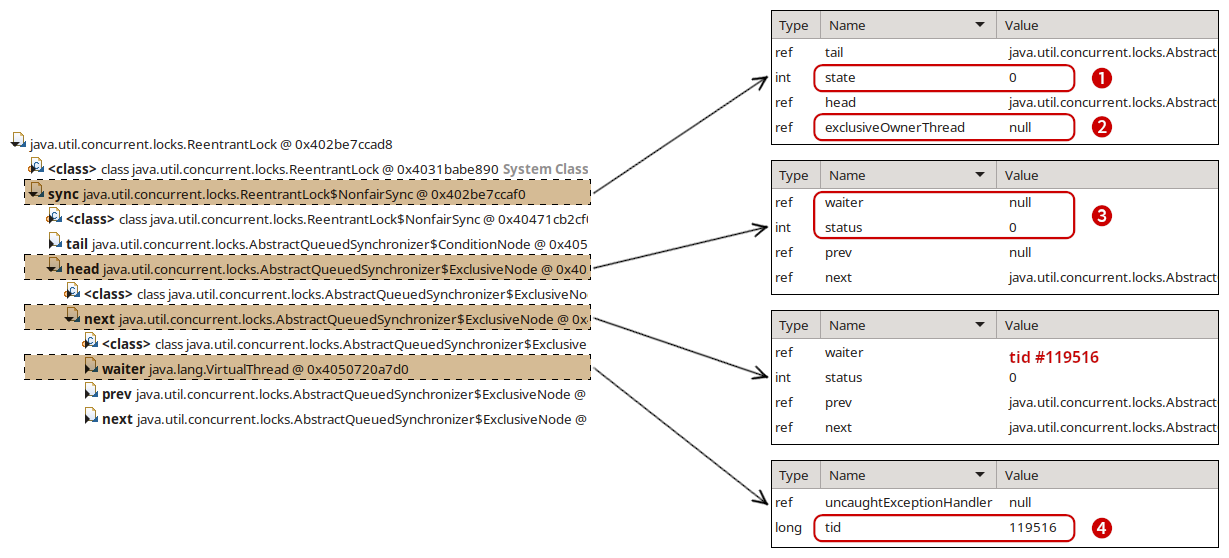1.字符串转为数字

#include <stdio.h>
int strToInt(char *s)
{
int num=0;
int sign=1;
int step=1;
if (*s == '-')
{
sign = -1;
s++;
}
while (*s >= '0'&&*s <= '9')
{
num = num*10+(*s-'0');
step += 10;
s++;
}
return num*sign;
}
int main()
{
char a[10] = "-1234";
char *s =a ;
printf("字符型:%s,整形:%d",s,strToInt(s));
return 0;
}
2.二维字符数组转一维数组

#include <stdio.h>
#include <stdlib.h>
int main()
{
char a[3][3] = { 'w','w','w','a','a','a','l','l','l'};
char n[10] = "";
for (int i = 0,m=0; i < 3; ++i)
{
for (int j = 0; j < 3; ++j)
{
printf("%c",a[i][j]);
n[m] = a[i][j];
m++;
}
printf("\n");
}
n[9] = '\0';
printf("%s\n",n);
return 0;
}
3.数字转换为字符串
#include <stdio.h>
void intToString(int num, char *str) {
int i = 0;
int isNegative = 0;
// 处理负数
if (num < 0) {
isNegative = 1;
num = -num; // 将负数转为正数
}
// 转换整数为字符串
do {
str[i++] = (num % 10) + '0'; // 获取当前数字并转换为字符
num /= 10; // 去掉当前的最后一位数字
} while (num > 0);
// 如果是负数,添加负号
if (isNegative) {
str[i++] = '-';
}
// 添加字符串结束符
str[i] = '\0';
// 反转字符串
for (int j = 0; j < i / 2; j++) {
char temp = str[j];
str[j] = str[i - j - 1];
str[i - j - 1] = temp;
}
}
int main() {
int number = -12345; // 示例整数
char str[20]; // 确保足够大以存放转换结果
intToString(number, str); // 调用转换函数
printf("整数转换的字符串为:%s\n", str); // 输出结果
return 0;
}
4.统计一行字符串中单词的个数

#include <stdio.h>
int main()
{
char a[] = "hello world my man!";
char *pa = a;
int count = 0;
int inWord = 0; // 用于跟踪是否在单词内部
while (*pa != '\0') // 直到字符串的结尾
{
if (*pa == ' ' || *pa == '\t' || *pa == '\n') // 如果是空格、制表符或换行符
{
inWord = 0; // 不在单词内部
}
else
{
if (inWord == 0) // 进入一个新单词
{
count++;
inWord = 1; // 现在在单词内部
}
}
pa++; // 移动到下一个字符
}
printf("单词的数量为:%d\n", count);
return 0;
}
5.删除数组中相同的数


#include <stdio.h>
#include <stdlib.h>
void del(int *a, int size) {
int *temp = (int*)malloc(size * sizeof(int)); // 临时数组,用于存储去重后的结果
int pre = 0;
int rear = 1;
int j = 0;
// 第一个元素肯定是要保留的
temp[j++] = a[pre];
// 遍历数组
while (rear < size) {
if (a[pre] != a[rear]) { // 如果当前元素和前一个元素不同
temp[j++] = a[rear]; // 保存不重复的元素
pre = rear; // 更新前指针
}
rear++; // 后指针继续前进
}
// 输出去重后的数组
printf("去重后的数组: ");
for (int i = 0; i < j; i++) {
printf("%d ", temp[i]);
}
printf("\n");
free(temp); // 释放动态分配的内存
}
int main() {
int a[] = {1, 1, 1, 2, 2, 3, 4, 4, 5, 6, 6, 6, 7, 8, 8, 9, 9, 9};
int size = sizeof(a) / sizeof(a[0]); // 计算数组大小
del(a, size); // 调用函数删除重复元素
return 0;
}
6.移动字符串中的内容

#include <stdio.h>
void moveBack(int m, char *p)
{
char temp[24]; // 临时数组用于保存前 m 个字符
int n = 0; // 用于计算字符串长度
// 手动计算字符串长度
while (p[n] != '\0') {
n++;
}
if (m > n) m = n; // 确保 m 不会大于字符串的长度
// 复制前 m 个字符到 temp 中
for (int i = 0; i < m; ++i) {
temp[i] = p[i];
}
// 将后面的字符向前移动
for (int i = m; i < n; ++i) {
p[i - m] = p[i];
}
// 将 temp 中的前 m 个字符放到末尾
for (int i = 0; i < m; ++i) {
p[n - m + i] = temp[i];
}
// 重新设置字符串的结尾
p[n] = '\0';
}
int main() {
char str[] = "world hello ";
printf("前:%s\n", str);
moveBack(6, str);
printf("后:%s\n", str);
return 0;
}
7.无符号整数去掉最高位

#include <stdio.h>
unsigned int fun(unsigned int a)
{
int b=1;
int temp = a;
while (temp/10>=10)
{
b *= 10;
temp /= 10;
}
b=b *10;
a=a%b;
return a;
}
int main() {
printf("%d", fun(7894));
return 0;
}
8.打印下三角

#include <stdio.h>
void xiasanjiao(int a[4][4])
{
for (int i=0;i<4;++i)
{
for (int j=0; j <=i ; ++j)
{
printf("%d ",a[i][j]);
}
printf("\n");
}
}
int main()
{
int a[4][4] = {
8,0,0,0,
8,8,0,0,
8,8,8,0,
8,8,8,8
};
for (int i = 0; i < 4; ++i)
{
for (int j = 0; j <4; ++j)
{
printf("%d ", a[i][j]);
}
printf("\n");
}
printf("下三角:\n");
xiasanjiao(a);
return 0;
}9.移动数组中的内容

#include <stdio.h>
void moveBack(int a[10], int m) {
int b[10] = { 0 };
// 复制前 m 个元素到 b
for (int i = 0; i < m; ++i) {
b[i] = a[i];
}
// 将后面的元素向前移动 m 位
for (int i = m; i < 10; ++i) {
a[i - m] = a[i];
}
// 将 b 中的元素放到数组的后 m 位
for (int i = 0; i < m; ++i) {
a[10 - m + i] = b[i];
}
}
int main() {
int a[10] = { 1, 2, 3, 4, 5, 6, 7, 8, 9, 10 };
moveBack(a, 3);
for (int i = 0; i < 10; ++i) {
printf("%d ", a[i]);
}
return 0;
}
10.删除字符串中的空格

#include <stdio.h>
void delSpace(char* a) {
char* original = a; // 保存原始字符串指针
char* result = a; // 用于存储处理后的结果
// 遍历原始字符串
while (*a != '\0') {
if (*a != ' ' && *a != '\t') { // 只复制非空格和非制表符字符
*result++ = *a; // 复制字符到结果字符串
}
a++;
}
*result = '\0'; // 添加字符串结束符
}
int main() {
char a[] = "h iph o p";
delSpace(a);
printf("%s\n", a); // 打印处理后的字符串
return 0;
}
11.字符串是否回文

#include <stdio.h>
int huiwen(char* a) {
int count=0;
while (a[count] != '\0') {
count++;
}
for (int i=0;i<count/2;++i)
{
if (a[i] != a[count - i-1])
return 0;
}
return 1;
}
int main() {
char a[] = "hiphop";
printf("%d\n", huiwen(a)); // 打印处理后的字符串
return 0;
}
12.找出链表中的最大值

#include <stdio.h>
typedef struct stu {
int data;
struct stu *next;
} Student;
// 查找链表中的最大值
int findMax(Student* h) {
if (h == NULL) {
return -1; // 如果链表为空,返回特殊值 -1 表示无数据
}
int max = h->data; // 假设第一个节点的数据为最大值
Student *current = h->next;
// 遍历链表
while (current != NULL) {
if (current->data > max) {
max = current->data; // 更新最大值
}
current = current->next; // 移动到下一个节点
}
return max;
}
int main() {
// 创建链表节点
Student s1, s2, s3;
Student* h;
s1.data = 120;
s2.data = 130;
s3.data = 140;
// 设置链表指针
h = &s1;
s1.next = &s2;
s2.next = &s3;
s3.next = NULL; // 最后一个节点的 next 为 NULL
// 查找链表中的最大值并打印
printf("链表中的最大值是: %d\n", findMax(h));
return 0;
}
13.字符按ASCII码表排序

#include <stdio.h>
// 手动计算字符串长度的函数
int my_strlen(char *str) {
int len = 0;
while (str[len] != '\0') {
len++;
}
return len;
}
// 排序中间字符的函数(降序)
void sort_desc(char *arr, int len) {
for (int i = 0; i < len - 1; i++) {
for (int j = i + 1; j < len; j++) {
if (arr[i] < arr[j]) {
// 交换字符
char temp = arr[i];
arr[i] = arr[j];
arr[j] = temp;
}
}
}
}
void fun(char str[]) {
// 手动获取字符串长度
int len = my_strlen(str);
// 确保字符串长度为7
if (len != 7) {
printf("字符串长度错误\n");
return;
}
// 提取首尾字符
char first = str[0];
char last = str[6];
// 提取中间5个字符到一个数组中
char middle[6]; // 5个字符 + 1个终止符
for (int i = 0; i < 5; i++) {
middle[i] = str[i + 1]; // 从 str[1] 开始
}
middle[5] = '\0'; // 手动添加字符串结束符
// 对中间字符进行按ASCII码降序排序
sort_desc(middle, 5);
// 输出结果:首字符 + 排序后的中间部分 + 尾字符
printf("%c%s%c\n", first, middle, last);
}
int main() {
char str[] = "CEAedca";
fun(str); // 调用函数进行排序
return 0;
}
14.成绩表中挑出某分数段的人

#include <stdio.h>
// 定义学生结构体
typedef struct {
int id; // 学号
int score; // 成绩
} Student;
// 函数 fun:筛选分数在指定范围内的学生,并返回人数
int fun(Student a[], int N, Student b[], int low, int high) {
int count = 0; // 用于统计符合条件的学生人数
// 遍历学生数组
for (int i = 0; i < N; i++) {
// 如果学生成绩在指定范围内(包含 low 和 high)
if (a[i].score >= low && a[i].score <= high) {
// 将该学生记录放入 b 数组中
b[count] = a[i];
count++; // 增加符合条件的学生数量
}
}
// 返回符合条件的学生人数
return count;
}
int main() {
// 假设有 5 个学生,主函数中已初始化
Student a[5] = {
{1, 55},
{2, 65},
{3, 70},
{4, 66},
{5, 60}
};
Student b[5]; // 用于存储符合条件的学生
int low = 60; // 分数下限
int high = 69; // 分数上限
// 调用 fun 函数,筛选分数范围内的学生
int count = fun(a, 5, b, low, high);
// 输出符合条件的学生数据
printf("符合分数范围 %d 到 %d 的学生有 %d 名:\n", low, high, count);
for (int i = 0; i < count; i++) {
printf("学号: %d, 成绩: %d\n", b[i].id, b[i].score);
}
return 0;
}
15.字符串中删除ASCII码为奇数的

#include <stdio.h>
#include <stdlib.h> // 包含 malloc 函数
char *oushu(char *a) {
int i = 0, count = 0;
// 分配足够的内存,假设最多有16个偶数字符
char *result = (char *)malloc(sizeof(char) * 16);
// 遍历字符串,找到偶数ASCII码值的字符
while (*a != '\0') {
if (*a % 2 == 0) { // 判断是否为偶数ASCII字符
result[count + 1] = *a; // 存储在result数组中
count++;
}
a++;
}
// 第一个位置存储偶数字符的数量
result[0] = count;
return result;
}
int main() {
char a[] = "abcdef"; // 示例字符串
// 调用函数获取偶数字符
char *p = oushu(a);
// 输出偶数字符
for (int i = 1; i <= p[0]; ++i) {
printf("%c\n", p[i]);
}
// 释放动态分配的内存
free(p);
return 0;
}
16.找出链表中的最小值(可能不止一个)

#include <stdio.h>
typedef struct stu {
int data;
struct stu *next;
} Student;
int findMin(Student* h) {
if (h == NULL) {
return -1;
}
int min = h->data;
int count = 0;
Student *current = h->next;
// 遍历链表
while (current != NULL) {
if (current->data < min) {
min = current->data;
}
current = current->next;
}
current = h;
while (current != NULL) {
if (current->data == min) {
count++;
}
current = current->next; // 移动到下一个节点
}
return count;
}
int main() {
// 创建链表节点
Student s1, s2, s3;
Student* h;
s1.data = 120;
s2.data = 120;
s3.data = 120;
// 设置链表指针
h = &s1;
s1.next = &s2;
s2.next = &s3;
s3.next = NULL;
printf("链表中的最小值是: %d\n", findMin(h));
return 0;
}
17.字符串后移

#include <stdio.h>
void fun(char *s) {
int i = 0, j = 0;
int star_count = 0;
// 统计前导的 * 号数量
while (s[i] != '\0') {
if (s[i] == '*') {
star_count++;
}
else {
// 将非 * 的字符依次移动到最前面
s[j++] = s[i];
}
i++;
}
// 在字符串的后面填充前导的 * 号
while (star_count--) {
s[j++] = '*';
}
// 添加字符串的结束符号
s[j] = '\0';
}
int main() {
char str[] = "******A*BC*DEF*G***";
printf("原字符串: %s\n", str);
fun(str);
printf("处理后字符串: %s\n", str);
return 0;
}
18.删除指定位置的字符

#include <stdio.h>
#include <stdlib.h>
char* fun(char *s1, char* s2, int n) {
int i = 0, j = 0;
n = n - 1;
// 遍历字符串 s1
while (s1[i] != '\0') {
// 跳过第 n 个字符
if (i == n) {
i++; // 跳过 s1 的第 n 个字符
continue;
}
s2[j] = s1[i]; // 将字符从 s1 复制到 s2
i++;
j++;
}
s2[j] = '\0'; // 添加字符串结束符
return s2;
}
int main() {
char str[] = "haiphop";
char *str2 = (char*)malloc((sizeof(str)) * sizeof(char));
if (str2 == NULL) {
printf("内存分配失败!\n");
return 1;
}
printf("原字符串: %s\n", str);
fun(str, str2, 2);
printf("处理后字符串: %s\n", str2);
free(str2);
return 0;
}
19.找出最长的字符串

#define _CRT_SECURE_NO_WARNINGS
#include <stdio.h>
#include <string.h>
void findLongestString(char *strings[], int count, char **max) {
*max = strings[0]; // 默认第一个字符串为最长
int maxLength = strlen(strings[0]);
for (int i = 1; i < count; i++) {
int currentLength = strlen(strings[i]);
if (currentLength > maxLength) {
maxLength = currentLength;
*max = strings[i]; // 更新最长字符串
}
}
}
int main() {
char *strings[100]; // 假设最多输入100个字符串
int count = 0;
char *input;
printf("请输入字符串(输入**结束):\n");
while (1) {
input = (char *)malloc(100 * sizeof(char)); // 分配内存存储输入字符串
scanf("%s", input);
if (strcmp(input, "**") == 0) {
free(input); // 释放内存
break; // 输入结束
}
strings[count++] = input; // 存储输入的字符串
}
char *longest;
findLongestString(strings, count, &longest);
printf("最长的字符串是:%s\n", longest);
// 释放分配的内存
for (int i = 0; i < count; i++) {
free(strings[i]);
}
return 0;
}
20.阶乘
#include <stdio.h>
int jiechen(int a)
{
if (a == 1)
return 1;
return a * jiechen(a-1);
}
int main() {
printf("%d",jiechen(5));
return 0;
}
21.移动零

void moveZeroes(int* nums, int numsSize) {
int insertPos = 0;
// 遍历数组,将非零元素按顺序放在数组前面
for (int i = 0; i < numsSize; i++) {
if (nums[i] != 0) {
nums[insertPos] = nums[i];
insertPos++;
}
}
// 剩下的元素全部填为0
for (int i = insertPos; i < numsSize; i++) {
nums[i] = 0;
}
}
22.无重复字符的最长子串

#include <stdio.h>
#include <string.h>
int lengthOfLongestSubstring(char *s) {
int n = strlen(s);
int maxLength = 0; // 记录最长子串的长度
int left = 0; // 滑动窗口的左指针
int charIndex[256]; // 记录字符上次出现的位置,假设字符集为ASCII码
// 初始化字符位置为-1,表示未出现过
for (int i = 0; i < 256; i++) {
charIndex[i] = -1;
}
for (int right = 0; right < n; right++) {
// 如果字符已经在当前窗口中出现,更新左指针位置
if (charIndex[(int)s[right]] >= left) {
left = charIndex[(int)s[right]] + 1;
}
// 更新字符出现的位置
charIndex[(int)s[right]] = right;
// 计算当前无重复字符子串的长度,并更新最大长度
int currentLength = right - left + 1;
if (currentLength > maxLength) {
maxLength = currentLength;
}
}
return maxLength;
}
int main() {
char s[] = "abcabcbb";
int result = lengthOfLongestSubstring(s);
printf("The length of the longest substring without repeating characters is: %d\n", result);
return 0;
}
23.kmp算法
#include <stdio.h>
#include <string.h>
// 构建部分匹配表(即next数组)
void buildNext(char *pattern, int *next, int m) {
int j = 0;
next[0] = 0; // 第一个元素的前缀长度为0
for (int i = 1; i < m; i++) {
// 当pattern[i]和pattern[j]不相等时,利用next数组回退
while (j > 0 && pattern[i] != pattern[j]) {
j = next[j - 1];
}
// 如果pattern[i]和pattern[j]相等,前缀长度加1
if (pattern[i] == pattern[j]) {
j++;
}
next[i] = j;
}
}
// KMP匹配过程
void kmpSearch(char *text, char *pattern) {
int n = strlen(text);
int m = strlen(pattern);
int next[m];
// 计算部分匹配表(next数组)
buildNext(pattern, next, m);
int j = 0; // 模式串的索引
for (int i = 0; i < n; i++) { // 主串的索引
// 当text[i]和pattern[j]不匹配时,利用next数组回退
while (j > 0 && text[i] != pattern[j]) {
j = next[j - 1];
}
// 如果匹配,则继续比较下一个字符
if (text[i] == pattern[j]) {
j++;
}
// 如果找到匹配模式串
if (j == m) {
printf("Found pattern at index %d\n", i - j + 1);
j = next[j - 1]; // 继续寻找下一个匹配位置
}
}
}
int main() {
char text[] = "ABABDABACDABABCABAB";
char pattern[] = "ABABCABAB";
// 执行KMP匹配
kmpSearch(text, pattern);
return 0;
}
24.找出数组中出现次数超过数组下标一半的元素
思想:先排序
















![[Xshell] Xshell的下载安装使用及连接linux过程 详解(附下载链接)](https://i-blog.csdnimg.cn/direct/3e27ab7b15ba474e9ea0f0edb19e93b8.png)


